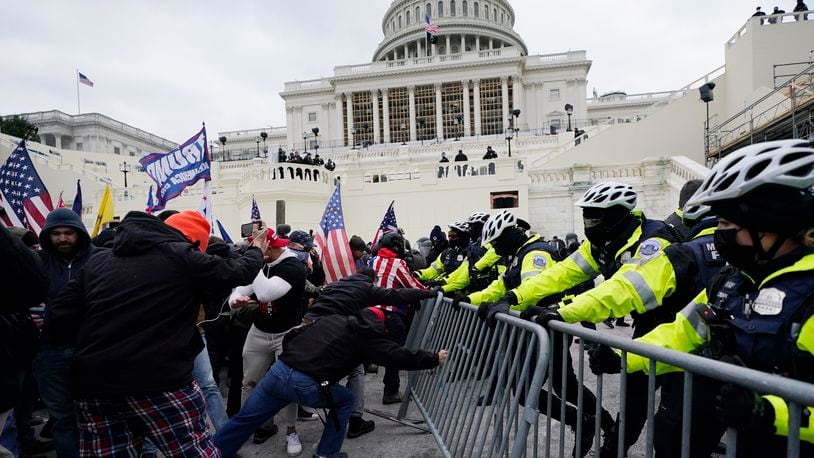The statement of facts said the U.S. Capitol is secured 24 hours a day, which includes restrictions via permanent and temporary security barriers and posts where only authorized people with appropriate identifications are allowed access.
During a joint session with the U.S. Congress, around 2 p.m., people in the crowd forced entry into the capitol by breaking windows and assaulting police while others in the crowd encouraged and assisted those acts, according to the statement of facts.
An anonymous tip on Jan. 9, 2021 to the FBI indicated Borgerding, along with Walt Messer and Richard Borgerding, posted videos and photos to Facebook of themselves at the riot.
Multiple comments on Facebook were referenced in court documents. Borgerding replied to comments on Messer’s account with: “Walt was there. You weren’t. You have NO story to tell. You might want to shut your mouth.” She also wrote: “I know they helped me and were very friendly and held the door for us to come in the Capitol building,” according to court records.
A photo believed to be of Borgerding at the Capitol shows her holding a pole of a ‘Q’ while her husband stands next to her.
Location information from Google was also used in the investigation. The criminal complaint includes maps of geolocatgion data for Messer, which indicates he traveled from Ohio to Washington, D.C. on Jan. 5, was at the Capitol Building on Jan. 6 and traveled back to Ohio on Jan. 7.
Borgerding was accused of unhooking barricades near the Capitol’s east front after a large crowd started over-running the barricades. She reportedly pushed the barricades apart, allowing herself and others to continue toward the Capitol building..
When police officers attempted to close the Capitol doors near the rotunda, protesters and rioters forced them back and pushed their way into the building, according to the U.S. Attorney’s Office. Borgerding was reportedly in the immediate area of the confrontation, which ties back into the disorderly and disruptive conduct in a restricted building or grounds and disorderly conduct in a Capitol building claims.
YouTube videos and surveillance video were also used in building the case against Borgerding , according to court records.
“Still holding her (sign), Borgerding pushed her way through the rotunda doors and walked straight into the rotunda, where she remained for approximately two minutes,” the U.S. Attorney’s Office said. “She then joined the large crowd near the Senate Wing doors and later exited through one of the smashed windows onto the northwest courtyard of the Capitol building around 2:49 p.m.”
She is scheduled to be sentenced on Aug. 15 by U.S. District Judge Timothy J. Kelly.
